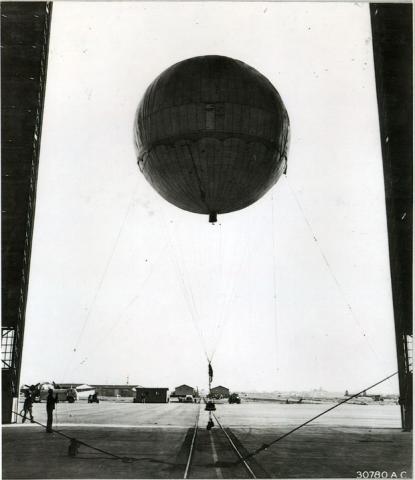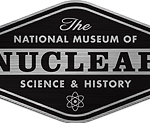Navigation
Install the app
How to install the app on iOS
Follow along with the video below to see how to install our site as a web app on your home screen.
Note: This feature may not be available in some browsers.
More options
You are using an out of date browser. It may not display this or other websites correctly.
You should upgrade or use an alternative browser.
You should upgrade or use an alternative browser.
US Coastal Air Defences in WW2
- Thread starter wuzak
- Start date
Ad: This forum contains affiliate links to products on Amazon and eBay. More information in Terms and rules
More options
Who Replied?pinehilljoe
Staff Sergeant
- 875
- May 1, 2016
Speaking of Condors has anyone seen the restored aircraft? Summary – Focke-Wulf Fw 200 "Condor"
The Condor was always one of my favorites, elegant , long range, the plane had the look of it being a head of its time, and the Churchillian nickname, the Scourge of the Atlantic.
The Condor was always one of my favorites, elegant , long range, the plane had the look of it being a head of its time, and the Churchillian nickname, the Scourge of the Atlantic.
Last edited:
swampyankee
Chief Master Sergeant
- 4,156
- Jun 25, 2013
Early in the war, a German air raid on an important (or not very important) city would more likely just piss us off, in the same way as we were furious with the Japanese. Maybe the US would even treat its own African-American soldiers better than the German PoWs.First they have to be able to do it, which the Germans couldn't really. In Germany's case it's a bit of a red herring in its impact given that from 1943 its cities are being rained on by day and night. I doubt the propaganda value of one aeroplane dropping a few bombs aimlessly over the USA will have much impact on the German people being subjected to the likes of the Hamburg raids, but I get your point, Dave.
Shortround6
Lieutenant General
Well, anything more than a nuisance raid (a few balloons with an incendiary bomb) early in the war could have had some consequences as several hundred towns all screamed that they were more important than their neighbor and needed costal defenses more than they did.Early in the war, a German air raid on an important (or not very important) city would more likely just piss us off, in the same way as we were furious with the Japanese. Maybe the US would even treat its own African-American soldiers better than the German PoWs.
Thousands of soldiers stationed up and down the east coast with penny packets of guns delaying the forming up and shipping out of the first divisions to send overseas.
GrauGeist
Generalfeldmarschall zur Luftschiff Abteilung
The Military worked real hard to keep the Japanese Fu-Go balloon bombs under wraps, too.
pinehilljoe
Staff Sergeant
- 875
- May 1, 2016
Remember what Richard Blane said to Major Strasser, "there are certain sections of New York I wouldn't advise you to try and invade" 
SaparotRob
Unter Gemeine Geschwader Murmeltier XIII
"Help me Rick!"
swampyankee
Chief Master Sergeant
- 4,156
- Jun 25, 2013
Be a bit harder to keep German bombers attacking the Northeast US under wraps than the baloon-borne Fu-Go bombs that were tiny and landed in the middle of nowhere.The Military worked real hard to keep the Japanese Fu-Go balloon bombs under wraps, too.
FLYBOYJ
"THE GREAT GAZOO"
West coast as well...Well, anything more than a nuisance raid (a few balloons with an incendiary bomb) early in the war could have had some consequences as several hundred towns all screamed that they were more important than their neighbor and needed costal defenses more than they did.
Thousands of soldiers stationed up and down the east coast with penny packets of guns delaying the forming up and shipping out of the first divisions to send overseas.
View attachment 664872

GrauGeist
Generalfeldmarschall zur Luftschiff Abteilung
The Japanese nearly scored a huge victory with their balloons, when one came down (of all places) at the Hanford Site, causing a short circuit in the power lines to the reactor's cooling system!Be a bit harder to keep German bombers attacking the Northeast US under wraps than the baloon-borne Fu-Go bombs that were tiny and landed in the middle of nowhere.
SaparotRob
Unter Gemeine Geschwader Murmeltier XIII
When did that happen? I never heard of that before.
GrauGeist
Generalfeldmarschall zur Luftschiff Abteilung
March of '45When did that happen? I never heard of that before.
GrauGeist
Generalfeldmarschall zur Luftschiff Abteilung
Here's some info about the Fu-Go balloons that has details of the Hanford incident:

 www.atomicheritage.org
www.atomicheritage.org

Japanese Balloon Bombs "Fu-Go" - Nuclear Museum
On November 3, 1944, Japan released fusen bakudan, or balloon bombs, into the Pacific jet stream. Japan’s latest weapon, the balloon bombs were intended to cause damage and spread panic in the continental United States.
 www.atomicheritage.org
www.atomicheritage.org
Denny G
Recruit
What was the state of coastal air defence of the United States during WW2?
I Imagine that the east coast would be well defended due to the concentration of industry in that region, the north east in particular.
My question stems from the start of this Megaprojects video, in which the myth of a bomber flight to the US east coast is mentioned.
I would think that such a flight would have been intercepted by US aircraft.
Here is a link where you can spend a couple of days reading. And there is much more if you search around a bit. The American Theater of Operations
Barrett
Staff Sergeant
Backtracing somewhat:
In researching Whirlwind and the LeMay bio I found that the Army Air Corps (not yet AAF) took upon itself the mission of coastal defense beyond X miles. A most peculiar situation because apparently Big Navy did not much object (maybe figured it wouldn't be necessary) AND the army conducted almost zero training for the mission.
Despite Billy Mitchell's 1921 staked-out Elephant type of tests, it should've been obvious (like totally) that hitting a maneuvering ship from a level bomber at umpteen thousand feet was, um, unlikely. (IIRC at Midway the B-17s dropped 322 bombs without a hit. The Forts did somewhat better in the Solomons, sinking 1 or two destroyers but I don't remember if they were moving.)
Just FWIW
In researching Whirlwind and the LeMay bio I found that the Army Air Corps (not yet AAF) took upon itself the mission of coastal defense beyond X miles. A most peculiar situation because apparently Big Navy did not much object (maybe figured it wouldn't be necessary) AND the army conducted almost zero training for the mission.
Despite Billy Mitchell's 1921 staked-out Elephant type of tests, it should've been obvious (like totally) that hitting a maneuvering ship from a level bomber at umpteen thousand feet was, um, unlikely. (IIRC at Midway the B-17s dropped 322 bombs without a hit. The Forts did somewhat better in the Solomons, sinking 1 or two destroyers but I don't remember if they were moving.)
Just FWIW
GrauGeist
Generalfeldmarschall zur Luftschiff Abteilung
The B-17 attacks at Midway did have an unexpected benefit - while they may not have caused any damage, they did hamper carrier operations and scattered the fleet.
The high point of B-17s versus shipping would be during the Battle of Bismark Sea.
The high point of B-17s versus shipping would be during the Battle of Bismark Sea.
Thumpalumpacus
Lieutenant Colonel
Remember what Richard Blane said to Major Strasser, "there are certain sections of New York I wouldn't advise you to try and invade"
Buster01
Airman
About every one of the old coast artillery sites, some dating to the late 1890s, were manned with 3 inch anti-aircraft guns in WWII. These forts were generally unarmed as the original canons were removed for use in WWI as railway artillery once converted and mounted on special railcars. The forts also received more modern 90mm fixed and mobile guns. Seattle, Portland, San Francisco, Los Angeles and San Diego on the pacific coast and almost all of the major coastal cities on the Atlantic coast were similarly armed. For information on where the gun emplacements were located, check out the Coast Defense Study Group. Plans and maps are available as free downloads.
Users who are viewing this thread
Total: 1 (members: 0, guests: 1)
